Herbs, spices and other seasonings are a natural and healthy way to add a lot of flavor to your recipes without adding a lot of extra calories.
With a little practice, you can create an endless variety of delicious recipes, such as Mediterranean-inspired favorites bursting with the fresh flavors of lemon, garlic and rosemary and spicy Mexican dishes featuring cilantro, cumin and chili powder. The flavor in herbs and spices are also great alternatives to salt.
Of course, your options won’t end there. A wide range of herbs, spices and seasonings are

English: Spices in Mapusa Market, Goa, India. (Photo credit: Wikipedia)
used throughout the world to make food taste better, and in some cases, last longer. Over time, certain flavors have come to represent the culinary identity of the areas where they originated. In large part, the seasonings you choose will define the direction of your own culinary development, as well.
With a little creativity, you can put a fresh spin on some of your favorite tried-and-true recipes by simply swapping out the herbs, spices and seasonings you use. For example, if you add fresh or dried basil or oregano to diced tomatoes, chopped onion and finely minced garlic, you have the makings of a wonderful red Italian sauce. On the other hand, if you replace the basil and oregano with cilantro and lime juice, those same ingredients become the foundation for a fabulous homemade salsa recipe.
To help inspire you, the following chart shows some of the most popular culinary ingredients based on geographic region.

Spices and herbs on a local market in Cairo, Egypt (Photo credit: Wikipedia)
Cuisine: Popular Herbs, Spices & Seasonings
Italian:
basil, oregano, marjoram, rosemary, parsley
French:
thyme, French tarragon, rosemary, basil, sage, mint, marjoram
Greek:
dill, lemon, oregano, fennel
Spanish:
saffron, smoked and regular paprika, rosemary, thyme
German:
mustard, rye, caraway seeds, borage
Mexican:
cilantro, chili powder, cumin, Mexican oregano
Indian:
curry powder, coriander, cumin, turmeric
Chinese:
five-spice powder, star anise, fennel seed, cloves, cinnamon, ginger
Thai:
Thai basil, cumin, turmeric, lemon grass, cinnamon
Of course, this chart is far from comprehensive, but it can serve as a good reference point for assembling your own collection of must-have herbs, spices and seasonings.
Keep in mind, some herbs, spices and seasonings, such as salt, black pepper and garlic, have an almost universal appeal that isn’t limited by geographic borders. Chances are you will notice those items popping up in recipes from all over the world. As a result, you may want to keep an adequate supply of these basic ingredients in your own pantry or spice rack.
You will also see a lot of crossover among dishes from countries that border one another. For example, French, Italian, Greek and Spanish dishes often feature many of the same herbs, such as basil, rosemary, oregano and thyme. Of course, this isn’t surprising when you consider how these populations interacted with and melded together over the course of history. Depending on your personal tastes and cooking habits, these ingredients may be good to keep on hand, as well.
Have you ever considered fresh herbs? Fresh herbs are super easy to grow from seed or

Herbs (Photo credit: Angela de Março)
from cuttings in your own garden and many can be brought indoors for year-round enjoyment. However, if growing fresh herbs isn’t your thing, many popular fresh and dried varieties are readily available. Dried herbs can be a great alternative to fresh, but take note of expiration dates and suggested storage methods. Dried herbs, spices and seasonings can be quite expensive, so buy smaller amounts at one time if you won’t be using them often.
Homemade Taco Seasoning Mix
This recipe only takes a couple minutes to put together and costs less than buying pre-packaged taco seasoning. It also has less salt and no artificial additives or preservatives.
Ingredients:
- 2 tablespoons chili powder
- 1 tablespoon ground cumin
- 1 teaspoon ground coriander
- 2 teaspoons garlic powder
- .5 teaspoon crushed red pepper flakes
- 1 teaspoon smoked paprika
- 1 teaspoon salt
- 2 teaspoon black pepper
Combine all ingredients in an airtight container and shake well to combine. Use 2 – 3 tablespoons per pound of ground beef (use more or less according to individual taste preferences).
This recipe can also be made in larger batches. Store unused amounts in an air tight container for up to 6 months.
Thanks To Tasting Taste for guest blogging on this post!










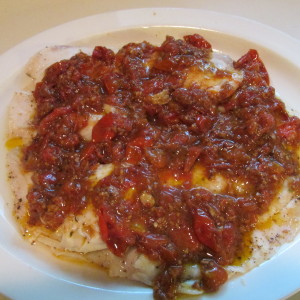
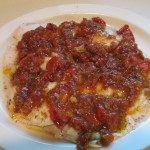























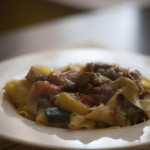
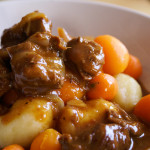








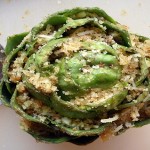


 #3 Simple Roasted Artichokes – Have you ever roasted garlic? Well that’s pretty much the way we’re preparing these artichokes. First off, we clean and cut the artichoke in a way that is fairly universal. Cut the stem so the artichoke can sit straight. Remove the lower leaves and cut about an inch off the top. Snip any remaining leaves that are sharp. Take a clove of garlic and shove it into the center of the artichoke and sprinkle with salt. Drizzle with olive oil and squeeze 1/2 lemon over the top. Wrap each artichoke in tin foil to form a tight seal. Bake at 425 for an hour and a half and let sit for 10 minutes before enjoying.
#3 Simple Roasted Artichokes – Have you ever roasted garlic? Well that’s pretty much the way we’re preparing these artichokes. First off, we clean and cut the artichoke in a way that is fairly universal. Cut the stem so the artichoke can sit straight. Remove the lower leaves and cut about an inch off the top. Snip any remaining leaves that are sharp. Take a clove of garlic and shove it into the center of the artichoke and sprinkle with salt. Drizzle with olive oil and squeeze 1/2 lemon over the top. Wrap each artichoke in tin foil to form a tight seal. Bake at 425 for an hour and a half and let sit for 10 minutes before enjoying.







































